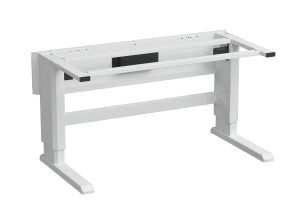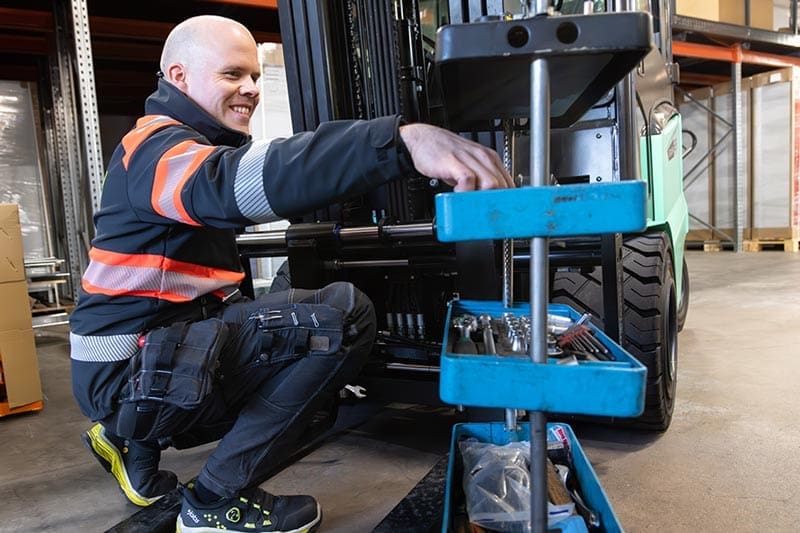Here are some practical tips to ensure you stay comfortable, productive, and safe throughout your workday when using a height-adjustable desk:
Adjust the desk height properly
When standing, set your desk height so your elbows naturally rest at about a 90-degree angle. With the right height, your shoulders stay relaxed, and your wrists remain straight.
Correct screen height makes all the difference
Place your screen so the top edge aligns with your eye level. This allows your gaze to angle slightly downward, keeping your neck comfortable and in a neutral position.
Balance your weight evenly
Regularly shift your weight from one leg to the other, but aim to stand with balanced weight on both feet most of the time. A stable and balanced posture helps minimize tension and fatigue.
Pay attention to footwear
Choose shoes with a thick yet flexible sole and a slight heel. Good supportive footwear makes all-day standing more comfortable and helps prevent foot and back pain.
Consider an anti-fatigue mat
Using an anti-fatigue mat reduces strain on your feet, knees, and lower back. The cushioning effect makes standing much more comfortable.
Listen to your body
If your legs or back start feeling tired, take a quick sitting break and relax your muscles. Vary your position often—short breaks for gentle movement keep your body energized and prevent stiffness.
Start with shorter standing periods
Standing takes some getting used to. Begin with shorter sessions, for example around half an hour at a time. Gradually increase standing periods as your body adapts comfortably.
Aim for half standing, half sitting
Ideally, alternate between standing and sitting throughout your day—around half and half is recommended. Frequent position changes help maintain focus and prevent fatigue or discomfort.
Remember to take regular breaks
Even with a standing desk, short breaks during your workday enhance productivity. Stretch, walk around a bit, or do a few easy exercises during your breaks.
Make full use of your electric desk
Your electric desk adjusts quickly, so take advantage and change heights frequently. Don’t forget to occasionally sit or try out other seating solutions, such as saddle chairs or balance boards, if they suit your workspace.
Switching between standing and sitting is proven to be beneficial to your overall health. A bit of gentle movement, regular breaks, and a properly adjusted workspace keep your body feeling great—and your back, neck, and legs will thank you








